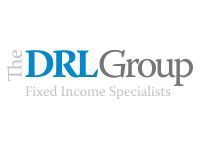
The Ladder, the Curve, and the Challenge
Laddering municipal bonds is a time-tested strategy that has helped investors generate predictable tax-free income for decades. But what happens when the yield curve flattens — or worse, inverts? Suddenly, the fundamental assumption behind traditional laddering — that longer maturities reward you with higher yields — gets turned on its head.
For sophisticated muni investors, these curve environments present both challenges and opportunities. The old playbook of building 10-year ladders with steady maturity spacing may no longer make sense when 2-year munis yield the same as 10-year bonds, or when short-term rates exceed long-term ones. Understanding how to adapt your laddering strategy to these conditions isn’t just helpful — it’s essential for maintaining the tax-advantaged income stream that drew you to municipal bonds in the first place.
This guide will show you exactly how to rebuild your approach when normal yield curve relationships break down, complete with specific strategies, real-world examples, and the mistakes that can derail even experienced bond investors.
What Is a Muni Bond Ladder — and Why Build One?
A municipal bond ladder involves purchasing individual muni bonds with staggered maturity dates, typically spaced evenly over a chosen time horizon. Instead of buying one prominent position that matures in a single year, you spread your investment across bonds maturing in years one, two, three, and so on.
The beauty of this approach lies in its elegant simplicity. As each bond matures, you receive your principal back and can reinvest it at whatever rates are available at that time. This creates a natural hedge against interest rate risk while providing steady cash flow throughout the ladder’s life.
Most investors build ladders spanning five to ten years, though some extend to fifteen years or more. The typical structure might involve equal dollar amounts maturing each year — say, $100,000 annually in a $1 million portfolio. This provides roughly $100,000 in annual cash flow that can either be spent or reinvested.
For high-net-worth individuals and retirees, ladders serve multiple purposes. They offer predictable income that’s generally exempt from federal taxes (and often state taxes if you buy in-state bonds). They also provide flexibility — if interest rates rise, your maturing bonds can be reinvested at higher yields. If rates fall, you’re protected by the higher coupons locked in on your existing holdings.
Yield Curves 101: Normal vs. Flat vs. Inverted
Understanding yield curve shapes is crucial for ladder construction because the curve tells you how much extra yield you earn for extending maturity.
In a normal yield curve environment, longer-term bonds yield more than shorter-term ones. This upward slope reflects the additional risks of holding bonds for extended periods — inflation risk, credit risk, and liquidity risk all increase with time. A typical standard curve might show 1-year munis yielding 2.5%, 5-year munis at 3.2%, and 10-year munis at 4.0%.
A flat yield curve compresses these differences. You might see 1-year munis at 3.5%, 5-year munis at 3.6%, and 10-year munis at 3.7%. The reward for extending maturity becomes minimal, making traditional laddering less attractive.
An inverted yield curve flips the relationship entirely. Here, shorter-term bonds yield more than longer-term ones. You might encounter 1-year munis yielding 4.2%, 5-year munis at 3.8%, and 10-year munis at 3.5%. This typically signals that investors expect interest rates to fall significantly in the future.
Each curve environment reflects different economic expectations and monetary policy stances, and each requires a different laddering approach.
Why Flat or Inverted Curves Complicate Laddering
Traditional ladder construction assumes you’re being compensated for duration risk. When that compensation disappears or reverses, several problems emerge.
First, there’s little incentive to extend maturity when yields are flat. Why tie up money for ten years at 3.7% when you can get 3.5% for just two years? The small yield pickup doesn’t justify the additional risk and reduced flexibility.
Callable bonds become particularly problematic in these environments. Many municipal bonds include call provisions allowing issuers to redeem them early when interest rates fall. In a flat or inverted curve, issuers have strong incentives to call higher-coupon bonds, potentially shortening your ladder’s average life just when you need the duration most.
Reinvestment risk also intensifies. In a normal curve environment, you generally expect to reinvest maturing proceeds at reasonable rates. But in flat or inverted curves, you may find yourself forced to reinvest in bonds offering lower yields than what you originally achieved, gradually eroding your portfolio’s income generation.
Tax efficiency considerations become more complex too. The tax-exempt advantage of municipal bonds matters most when yields are attractive relative to taxable alternatives. In compressed yield environments, you might find that after-tax yields on corporate bonds or Treasuries actually exceed what you can earn on munis.
Smart Ladder Strategies for Flat & Inverted Environments
Short-Term Ladders with Liquidity Flexibility
When yield curves flatten, consider shortening your ladder’s average maturity significantly. Instead of a traditional 10-year ladder, focus on maturities spanning just one to five years. This approach accepts lower absolute yields in exchange for greater flexibility to capitalize on changing conditions.
Build these ladders using high-credit municipal bonds — think AAA-rated general obligation bonds from stable states or essential service revenue bonds with strong coverage ratios. Credit quality becomes more important when you’re sacrificing yield for flexibility, since you can’t afford defaults or downgrades to erode your already-compressed returns.
The key advantage here is positioning. When yield curves eventually normalize — and they typically do — you’ll have substantial amounts of capital maturing regularly that can be redeployed at more attractive longer-term rates.
Barbell Strategy with Municipal Bonds
The barbell approach combines very short-term bonds (1-3 years) with longer-term issues (10+ years), while avoiding intermediate maturities where yields are most compressed. This strategy works particularly well when the middle of the curve offers poor value.
For example, you might allocate 60% of your portfolio to bonds maturing within three years and 40% to bonds maturing in 12-15 years. The short end provides liquidity and reinvestment opportunities, while the long end captures whatever term premium still exists at the curve’s far end.
Staggered Callable Ladders
Callable municipal bonds often trade at higher yields than non-callable issues, reflecting the embedded option value that issuers hold. In flat curve environments, these yield pickups become more valuable since traditional term premiums have compressed.
The strategy involves building ladders using callable bonds with different call dates and call prices, creating multiple scenarios for cash flow timing. Focus on bonds with call protection — meaning they can’t be called for several years after issuance — and avoid bonds that are immediately callable at par.
Monitor call probabilities carefully by tracking interest rate movements and the issuer’s refinancing incentives. Many financial platforms now provide call probability estimates that can help you model potential cash flow scenarios.
Using Taxable Munis or Agencies as Curve Complements
Sometimes the municipal yield curve becomes so compressed that taxable alternatives offer better after-tax returns. This is particularly true for investors in lower tax brackets or those holding bonds in tax-deferred accounts.
Consider incorporating taxable municipal bonds — munis that don’t qualify for tax exemption but typically yield 100-200 basis points more than tax-exempt issues. Bank-qualified municipal bonds, Build America Bonds, or direct-pay municipal bonds can all play roles in ladders when traditional tax-exempt yields are unattractive.
Federal agency bonds and high-grade corporate bonds can also complement muni ladders during compressed yield environments. The key is running after-tax yield calculations to ensure you’re optimizing total return, not just chasing tax exemption for its own sake.
This strategy requires more active management than traditional laddering, since you’ll need to monitor the short-term positions closely and make reinvestment decisions more frequently. However, it can generate superior returns when intermediate yields are artificially suppressed.
Case Study: Two Ladders Compared
Consider two $1 million municipal bond ladders constructed under different yield curve conditions.
Traditional Ladder (Normal Curve Environment): Built when 2-year munis yielded 2.8%, 5-year munis yielded 3.4%, 8-year munis yielded 3.9%, and 10-year munis yielded 4.2%. The investor allocated $100,000 to bonds maturing each year from years 1-10, achieving an average yield of approximately 3.5% across the portfolio. Annual cash flow averaged $35,000, with $100,000 in principal maturing each year for reinvestment.
Adapted Ladder (Flat Curve Environment): Built when yield differences compressed — 2-year munis at 3.7%, 5-year munis at 3.8%, and 10-year munis at 3.9%. Rather than accept minimal compensation for duration risk, the investor built a 5-year ladder with $200,000 maturing annually. Average yield: 3.75%. Annual cash flow: $37,500, with $200,000 in principal maturing each year.
The shorter ladder actually generated higher current income while providing twice the annual reinvestment flexibility. If curves normalized over the subsequent two years, the shorter ladder would be positioned to capture rising rates much more effectively than the traditional structure.
Risks and Mistakes to Avoid
Several common errors can undermine ladder performance in challenging yield environments.
Overloading on callable bonds represents perhaps the biggest risk. While callable munis offer yield premiums, issuers become more likely to exercise call options when curves flatten or invert. This can leave you with unexpected cash that must be reinvested at lower rates.
State tax implications deserve careful attention, especially for investors building shorter ladders that may require more frequent reinvestment. In-state bonds provide state tax exemption, but they may offer lower yields than out-of-state alternatives. Run the math to ensure the tax benefit justifies any yield sacrifice.
Liquidity considerations become more important when you’re building shorter, more actively managed ladders. Avoid bonds with thin trading markets or complex structures that might be difficult to sell if circumstances change. Stick with well-known issuers and mainstream bond structures.
Underestimating reinvestment risk can gradually erode portfolio performance. In flat or inverted curves, there’s a real possibility that each reinvestment cycle will occur at lower rates than what you’re replacing. Build this assumption into your return projections rather than assuming you’ll always be able to maintain current yield levels.
A Ladder Is Still Useful — You Just Have to Rebuild It Smarter
Municipal bond ladders remain one of the most effective tools for generating predictable tax-free income, even when yield curves don’t cooperate. The key lies in adapting your approach to current conditions rather than blindly following traditional ladder construction rules.
Flat and inverted yield curves are temporary conditions that reflect specific economic and monetary policy circumstances. They don’t last forever, and positioning your portfolio to benefit when normal relationships return can significantly enhance long-term returns.
The strategies outlined here — shorter ladders, barbell approaches, callable bond integration, and tactical use of taxable alternatives — all aim to maintain the core benefits of laddering while adapting to challenging yield environments. Focus on flexibility, credit quality, and after-tax optimization rather than simply maximizing current yield.
Remember that successful laddering in any environment requires ongoing attention and occasional adjustments. Market conditions change, yield relationships evolve, and your personal circumstances may shift. Regular portfolio reviews ensure your ladder continues serving its intended purpose regardless of what the yield curve throws at you.
Laddering in a Flat Curve – 4 Quick Rules
- Think shorter — Reduce average maturity when term premiums compress
- Stay high-credit — Quality matters more when yields are already low
- Consider barbells — Skip the squeezed middle of the curve
- Don’t fear cash — Flexibility has value when conditions are changing
Take Action on Your Municipal Bond Strategy
For investors: Review your current municipal bond ladder in light of today’s yield curve environment. Are you being adequately compensated for duration risk? Would a shorter, more flexible structure better serve your income needs and market positioning? Talk to your advisor about how your muni ladder is positioned for the current curve.
For advisors: These strategies provide concrete ways to help clients maintain predictable tax-free income streams regardless of yield curve shape. Bookmark these approaches to enhance client conversations about municipal bond portfolio optimization in any market environment.






